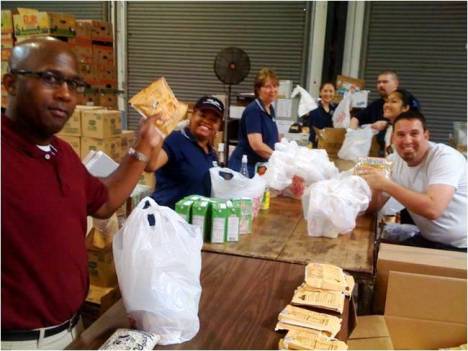
Brown Field Municipal Airport in southern San Diego County, near the border with Mexico, is one of ten General Aviation airports in the county.
Have you ever wondered why we’re called a county regional airport authority, instead of, say, the San Diego International Airport Authority? A lot of people mistakenly believe that we’re an arm of San Diego’s county government because of our name, but that’s not the case. So what’s the reason for our name? It’s been a while since the Ambassablog delved into this, so it seems time for a refresher—and an expanded lesson.
While the Airport Authority operates just one airport, SDIA, we were created by the state with two other mandated functions: to serve as the regional aviation planning coordinator for the county and to serve as the county airport land use commission.
The latter responsibility is what makes up my job – doing land use compatibility planning for other airports in the county through their adopted Airport Land Use Compatibility Plans( ALUCPs). I also contributed to the Regional Aviation Strategic Plan (RASP) adopted by the Airport Authority last year. It evaluated several of these airports for ways to optimize the regional aviation system.

Have you ever seen Fallbrook Community Airpark? Here it is.
So what are those other airports? There is only one other commercial service airport in the county, McClellan-Palomar in Carlsbad. Both it and SDIA each also has a general aviation component. The 10 other public-use airports in the county are strictly for GA:
But the question is often asked, “What exactly is general aviation?”
Ever wonder how your GPS gets its mapping data? Or how our largely rural international border is monitored? Or even more basic: how do they maintain many of the massive farm fields that produce our food and nursery plants?
All of these functions and more are largely handled through GA airports! Here are just some of the vital roles handled through these facilities:
- Emergency preparedness and response, medical transport, and search & rescue missions
- Aerial firefighting
- Law enforcement, customs, and homeland/border security
- Emergency flight diversion
- Remote community and wilderness access (e.g., islands and reservations)
- Charter passenger services (e.g., tours, sports and music events)
- Mail/package delivery and air cargo
- Corporate transportation
- Flight instruction
- Agricultural crop-dusting support
- Aerial surveying
- Oil and mineral exploration
- Utility/pipeline monitoring and inspection
- Aviation manufacturing, distribution, and maintenance industries
- Aerospace engineering and research
- Low-orbit space launch and landing
- Special public events (e.g., air shows, skydiving)

Ramona Airport.
Whew! That’s quite a list. Most people rarely think about GA airports, but they really contribute to our wellbeing. Life without them would be a lot harder for sure.
So the next time you think about flying, consider that it’s more than just commercial airlines ferrying passengers. GA airports enhance our daily lives in many ways, so we’re proud to be a County Regional Airport Authority, planning to protect these vital assets in the San Diego region.
 San Diego County’s 10 GA airports are part of a network of nearly 3,000 general aviation airports across the country, making their numbers far greater than the commercial service airports with which the flying public is better acquainted.
San Diego County’s 10 GA airports are part of a network of nearly 3,000 general aviation airports across the country, making their numbers far greater than the commercial service airports with which the flying public is better acquainted.
SDIA has done a good job spreading the word about the economic benefits of our airport, summed up in the slogan “Airports Fuel Regional Economies.” But GA airports are also critically important to the economic vitality of the regions they serve—far beyond just the recreational pilots and passengers who use them.
Filed under: BY AMBASSABLOGGER AUTHOR, ED (Airport Planning Department), Get to Know Your Airport, In the Community, Long-Term Airport Development | Tagged: Aviation, Borrego Valley Airport, Brown Field Municipal Airport, Fallbrook Community Airpark, General aviation, Ramona Airport, San Diego, San Diego International Airport | Leave a comment »

 This exciting realm of possibilities is part of the Airport Development Plan, or ADP. You’ll be hearing a lot about it in the coming years, just as you’ve grown familiar with the Authority’s other planning efforts, like The Green Build and North Side Development.
This exciting realm of possibilities is part of the Airport Development Plan, or ADP. You’ll be hearing a lot about it in the coming years, just as you’ve grown familiar with the Authority’s other planning efforts, like The Green Build and North Side Development.






















